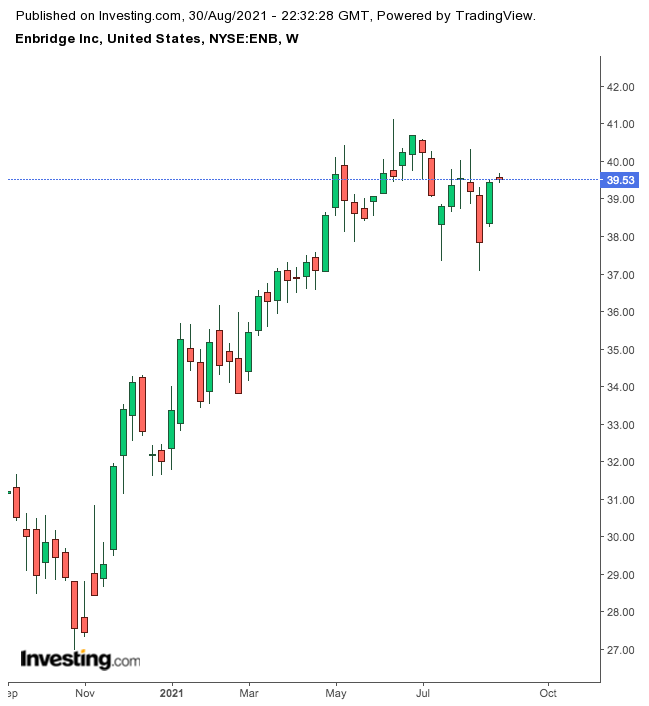If you’re looking to buy a quality dividend stock that provides a high yield, there aren’t many options available these days. After a year-long, relentless equity market rally, some of the best dividend stocks are now offering yields that are in the low single digits.
The companies listed on the , on average, are paying a dividend yield of just 2%. But if you are willing to expand your horizon and look beyond U.S. markets, there are still some companies that provide decent returns and are not that risky.
One such high-yield opportunity, from the Canadian market, is Calgary-based Enbridge (NYSE:). The energy sector company is North America’s largest gas and oil pipeline operator. Below, a deeper look to understand what makes it a strong income-generating equity candidate.
Wide Economic Moat
Research has shown that the companies that provide basic services—like power and gas utilities, telecom operators and health-care providers—outperform in economic downturns and recessions.
These companies continue to generate cash flows and distribute most of that via dividends. In addition, Enbridge has a wide economic moat, a term coined by Warren Buffett to define businesses with a huge competitive advantage.
The company operates across North America, fuelling the economy and fulfilling consumers’ energy needs. Enbridge moves nearly two-thirds of Canada’s exports to the U.S., transports about 20% of the consumed in the U.S., and operates North America’s third-largest natural gas utility by consumer count.

Enbridge Weekly Chart.
Strong Cash Flows
Enbridge’s cash flows are well diversified, generated across many businesses and geographies, helping the utility to weather the economic downturn better than other companies.
For instance, while the pandemic hurt oil consumption across the board, Enbridge’s gas transmission, distribution and storage businesses, which account for about 30% of its cash flows, shielded the utility and saved its payout.
In the , Enbridge’s revenue surged nearly 38% to $10.9 billion from almost $8 billion in the prior year quarter. The company also reaffirmed its 2021 financial guidance for earnings before interest, taxes, depreciation and amortization (EBITDA) of between $13.9 billion and $14.3 billion and distributable cash flow of $4.70 to $5 per share.
Over the past three years, Enbridge management has been carrying out a restructuring plan, selling assets, focusing on its core strengths, and paying down its debt. These measures are likely to benefit long-term investors with a goal of earning steadily growing income.
The company in June sold its stake in a Montreal-based natural gas distributor for C$1.14 billion (USD $906.4M) in cash as it aimed to keep debt levels at 4.5 to 5 times EBITDA. The company’s other priorities include increasing its dividend, completing a major oil pipeline expansion project this year, and expanding its renewable energy business.
Dividend History
ENB, whose shares closed at $39.53 on Monday, has a solid payout history. It has increased dividends at an annual rate of 10% in the last 26 years. Currently, the utility has an annual dividend yield of about 7%, which translates into a quarterly payout of $0.6675.
The company forecasts it will increase distributable cash flows between 5% and 7% through 2023. It also expects to pay between 60% and 70% of its DCF as dividends, making the payouts sustainable.
Bottom Line
Enbridge stock had a strong rally this year, gaining 23%, far exceeding the return provided by the iShares U.S. Utilities ETF (NYSE:). Despite this impressive run, its dividend yield remains attractive. Shares are suitable for investors who want to keep a solid income-producing stock in their portfolio.

